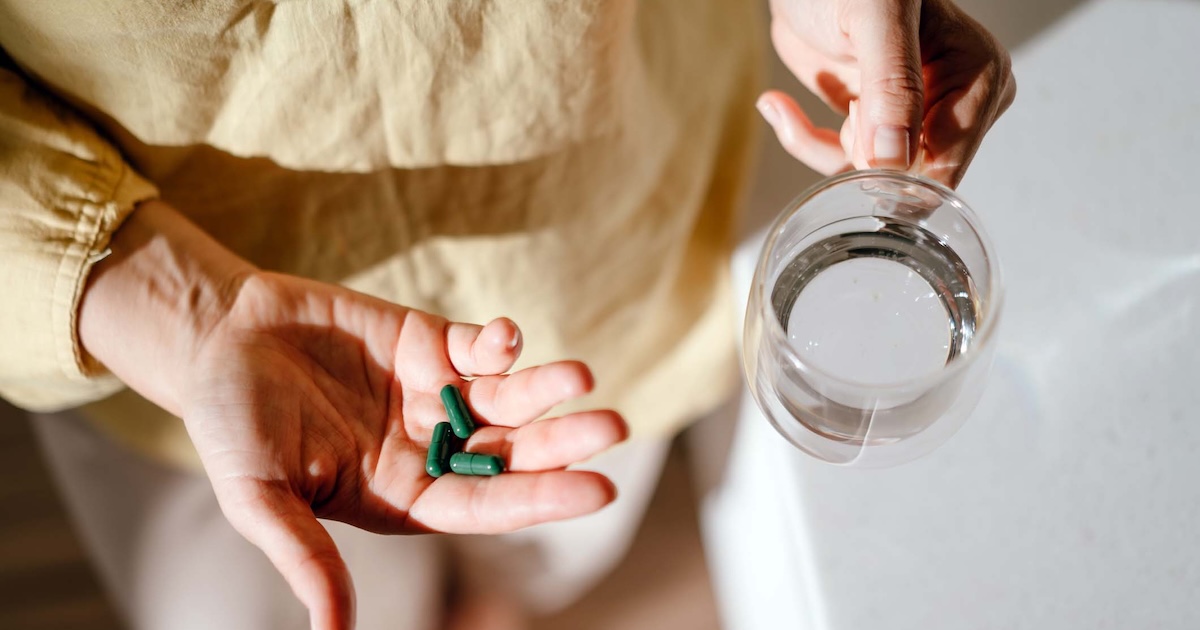 According to a report from consulting firm Emergo Group, FDA officials said they would offer up guidance on how it plans to regulate mobile medical applications before the year is over. The report is not surprising considering the work that the mHealth Regulatory Coalition (mHRC) has done on the subject. Late last year the mHRC submitted its own guidance document for the FDA to consider as it determines how best to regulate mobile medical apps.
According to a report from consulting firm Emergo Group, FDA officials said they would offer up guidance on how it plans to regulate mobile medical applications before the year is over. The report is not surprising considering the work that the mHealth Regulatory Coalition (mHRC) has done on the subject. Late last year the mHRC submitted its own guidance document for the FDA to consider as it determines how best to regulate mobile medical apps.
The question of whether the FDA would regulate the industry was never a serious one -- it's always been a matter of how.
"Manufacturers have thus far received little official guidance from the FDA regarding how the CDRH would handle mobile medical applications... According to information provided by FDA officers at the town hall, software validation will be required for mobile medical applications. Whether such devices would have to go through 510(k) or pre-market approval processes, or be ruled 510(k)-exempt—has not yet been determined, [the officials] said," according to the Emergo report.
Of course, the FDA has cleared medical devices that connect to cellular networks via embedded chips or through connections to mobile phones. In recent years the FDA has also granted 510(k) clearances to a number of health-related software applications intended for use on smartphones, mobile phones or PDAs. Yes, the regulation of medical software on handheld devices began long ago.
The Emergo report pointed to a couple of the more well-known examples of medical apps that have received FDA clearances, and their inclusion of MobiUS's Mobisante is a little off the mark is correct. UPDATE: Mobisante CEO Sailesh Chultani confirmed with MobiHealthNews that although the summary document for its MobiUS Ultrasound Imaging System's 510(k), clears the probe to connect to a "host computer" and makes no mention of software on or accessed through a mobile phone, the longer 510(k) document does.
However, after a quick search of the FDA's 510(k) clearances archive we discovered only seven eight nine ten eleven examples of mobile medical software that have achieved FDA's greenlight over the years. (Keep sending them in!) Ignore the misleading headlines that the FDA is set to begin regulating mobile medical apps, it's clear that the FDA began years ago:
October 1997: FDA approves Data Critical's RhythmStat XL System

"The RhythmStat XL System is indicated for use in the diagnostic evaluation and recording of ECG waveforms from a cardiac event recorder. It is intended to provide remote access to ECG data by transtelephonic transmission from an ambulatory cardiac event monitor to the portable PSION palmtop computer with RhythmStat XL Software, where the ECG waveforms are demodulated, recorded, displayed and stored," Data Critical wrote in its filing.
November 2004: FDA approves AirStrip Technologies' AirStripOB

"AirStrip OB is intended to be used by Obstetricians for the following purposes: To more rapidly and thoroughly respond to a nurse call regarding fetal heart tracings or maternal contraction patterns by viewing the real time waveforms remotely using a mobile device such as a PDA or Smart Phone. To proactively review a fetal heart or maternal contraction tracing of a patient in Labor and Delivery for whom they are responsible but are unable to be present in the hospital at that time. To review the current Labor and Delivery patient census list. Provide a request for remote consultation regarding a fetal heart tracing. To remotely review other standard or critical real-time numeric data from Labor and Delivery," AirStrip wrote in its filing.
February 2006: FDA approves Vocel's Pill Phone software

"The PILL PHONE software device will be sold to users of cell phones (or other communication devices) through their cell phone service. The software will have a feature to send out reminders to a cell phone owner of the dosing schedule that has been programmed into the phone, whether the dosing schedule is for the user, a child, or an elderly parent. The software will also enable the delivery of information about medications, such as indications for use, dosing, side effects, and even photographs of different pills. The PILL PHONE software is a Minor Level of Concern," Vocel wrote in its 510(k) application.
July 2006: FDA approves GE Healthcare's Pocket Viewer/Cellular Viewer

"The Pocket Viwver [SIC] client runs on a generic handheld computer (PDA) that is connected to the hospital local area network (LAN). The Pocket Viewer can be used for viewing or otherwise processing o information from several bedside monitors or ether networked devices. The Pocket Viewer can be used for patients in the hospital and itis meant for consultation and remote monitoring use. The Pocket Viewer is not a primary alarm source. The device is for use by qualified medical personnel only," GE wrote in its 510(k) filing.
June 2008: FDA clears the VEO Multigas Monitor for Pocket PC

"The VEO Multigas Monitor for Pocket PC, model 400601 is intended to provide monitoring of C02, N20, anesthetic agents, anesthetic agent identification and respiratory rate during anesthesia, recovery and respiratory care. Itmay be used inthe operating suite, intensive care unit, patient room and emergency medicine settings for adult, pediatric and infant patients," PHASEIN wrote in its 510(k) filing.
October 2008: FDA approves Roche's ACCU-CHEK Pocket Compass Diabetes Management

"The ACCU-CHEK Pocket Compass Diabetes Management Software is a single user system indicated for use as an accessory to compatible Disetronic insulin pumps and a number of commercially available Accu-Chek blood glucose meters to download data from these devices to a personal digital assistant (PDA) where it may be saved, displayed, reviewed, analyzed, and evaluated to support effective diabetes management. The Accu-Chek Pocket Compass Software is also indicated for the management of diabetes by calculating an insulin or carbohydrate dose based on user entered data. The device is indicated for over-the-counter sale," Roche wrote in its 510(k) filing.
June 2010: FDA approves WellDoc's DiabetesManager

"The WelIDoc DiabetesManager System is indicated for use by healthcare providers (HCPs) and their adult patients - aged 21I years and older - who have type 2 diabetes. The DiabetesManager System is intended to provide secure capture, storage, and transmission of blood glucose data as well as information to aid in diabetes self-management. The DiabetesManager System analyzes and reports blood glucose test results and supports medication adherence. It includes software intended for use on mobile phones or personal computers in the home or in professional healthcare settings. The software also allows for entry of other diabetes-related healthcare information and provides educational information. The DiabetesManager System is not intended to replace the care provided by a licensed healthcare professional, including prescriptions, diagnosis, or treatment," WellDoc wrote in its filing.
July 2010: FDA approves AirStrip Technologies' AirStrip Remote Patient Monitoring (RPM) Remote Data Viewing software

"AirStrip RPM software is intended for installation on cellular telephones and other wireless devices, and is not intended for use anywhere cellular telephones or wireless devices are prohibited. AirStrip RPM is intended for use by clinicians when they cannot be at the hospital. AirStrip RPM is intended for use by clinicians as a diagnostic aid, and not as a replacement for direct viewing of any of the monitoring devices from which it obtains its data," AirStrip wrote in its filing.
July 2010: FDA clears Mobisante's MobiUS Ultrasound Imaging System

"The MobiUS Ultrasound Imaging System is indicated for ultrasound imaging, measurement and analysis of the human body for the following clinical applications: fetal/OB, abdominal, cardiac, pelvic, pediatric, musculoskeletal, and peripheral vessel imaging. Its compact size, portability and user interface enable it for use in primary care and special care areas," the company wrote in its filing.
September 2010: FDA clears WaveSense's Diabetes Manager

"The WaveSense Diabetes Manager (WOM) application (app) isintended for use inthe home and professional settings to aid individuals with diabetes and their healthcare professionals; inthe review, analysis and evaluation of blood glucose readings to support an effective diabetes managemnent-programn. The WaveSense Diabetes Manager application isadigital logbook and.diabetes management tool designed to operate using the iPhone Operating System platform. The application can be used alone or with the WaveSense Direct Connect Cable and a WaveSense-enabled blood glucose meter (BGM) with a mini-USB poll," WaveSense wrote in its filing.
December 2010: FDA approves MIM Software's Mobile MIM

"The Mobile MIM software program is used for the registration, fusion, and/or display for diagnosis of medical images ftom only the following modalities: SPECT, PET, CT, and MRI. Mobile MIM provides wireless and portable access to medical images. This device is not intended to replace full workstations and should be used only when there is no access to a workstation. This device is not to be used for mammography," MIM wrote in its filing.


